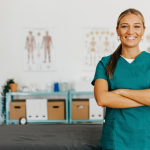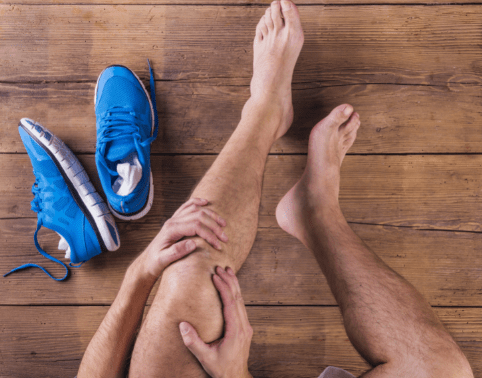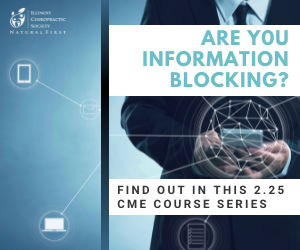
Runner’s Knee: Patellofemoral Pain (PFP)

This is the 1st article in a series on runners and running injuries. It’s written as a patient resource and literature-based clinician brief. I hope you find it useful!Patrick Labelle, DC
Patellofemoral pain is pain under your kneecap. When runners get PFP, it’s commonly known as runner’s knee.
Runner’s Knee Symptoms
- It’s often difficult to put one finger on exactly where the pain is coming from; you’re more likely to indicate a larger area around the front of the knee.
- It can sometimes refer pain to the back part of the knee.
- The pain can range from sharp and sudden to dull and chronic.
- The pain can go away after a few minutes of running, only to return with a vengeance an hour after you stop.
- Runner’s knee can happen in only one knee or both knees at the same time.
Runner’s Knee Fast Facts
- It’s the most common overuse injury in runners.
- You’re more likely to develop runner’s knee if:
- You are a younger active individual (peak at 12-17 years old), but can happen at any age or activity level.
- You are a woman (estimated 2:1 female:male ratio).
- Runner’s knee is aggravated by squatting, going up or down stairs, prolonged sitting, and running.
- Runner’s knee responds well to physical rehabilitation that works on the cause, not the symptoms.
- There is currently no evidence that runner’s knee leads to arthritis of the knee.
Runner’s Knee Myths
Several generally accepted causes of runner’s knee have been disproven (or at least called into doubt) in the last decade:
Myth 1 – Weak quads cause runner’s knee
The Theory: Weak quads aren’t able to support the patella, leading it to track out of alignment.
The Truth: A study published in 2013 found that there was no significant difference in quadriceps activation between patients with PFP and those with no PFP.
Myth 2 – Wider hips is why women are more prone to runner’s knee
The Theory: Women tend to have wider hips, resulting in a greater angling of the thigh bone to the knee, which puts the kneecap under more stress.
The Truth: The angle of your thigh bone is not a risk factor for PFP.
What Causes Runner’s Knee?
Runner’s knee is the painful sign of a problem that’s usually located in your hips or feet.
Hips and Core
There is a growing consensus that proximal mechanics are altered in women with PFP. That means that women with PFP have weakness or coordination in their hips and/or core. Proximal mechanics does not seem to be a major factor in PFP in men.8
Feet and Shins
The main factor at your feet seems to be how much your shin bone (tibia) turns inward above your ankle during your normal gait cycle. Excessive tibial internal rotation is linked to increased risk of PFP.
Treatment
Self-Treatment
Listen to your body:
- At the first sign of pain, cut back your mileage. You can’t run through the problem without making it worse. As a runner, I know this is the worst thing I can say to you…. Sorry.
- Avoid knee-bending activities.
- Avoid canted (side-sloped) surfaces.
- Avoid going down hills and stairs if possible until the pain is gone.
It can take up to six months before you’re able to return to training (depending on the severity).
Healthcare Professional
If self-treatment is not working or you need faster results, consider visiting a sports medicine professional who is familiar with running injuries. A plan designed for your unique situation is better than the cookie cutter (and sometimes harmful) advice found on some mainstream running sites. This is what you should get:
- Therapeutic exercises – the exact exercises you need to correct the mechanics around your hips and core (based on functional movement testing)
- Kinesio taping – Works with your body’s nervous system and circulation
- Custom Orthotics – Made for your feet to prevent internal rotation of your shins (if needed)
Other modalities are either experimental or have shown no benefit.
Prevention
You can take some precautions to prevent runner’s knee (or stop it from coming back):
- Run on softer surfaces.
- Don’t increase your weekly mileage by more than 10% per week.
- Make sure you’re wearing the proper shoes for your foot type and gait.
- Stretch, foam roller, massage muscles that get short and tight.
- Do a home exercise program which may include side planks, single leg bridges, step downs, and lunges (later).
References
- “A retrospective case-control analysis of 2002 running injuries | British ….” http://bjsm.bmj.com/content/36/2/95. Accessed 26 Jun. 2017.
- “Anterior knee pain in younger adults as a precursor to subsequent ….” https://www.ncbi.nlm.nih.gov/pubmed/20828401. Accessed 26 Jun. 2017.
- “Patellofemoral pain – British Journal of Sports Medicine – The BMJ.” http://bjsm.bmj.com/content/48/6/411. Accessed 26 Jun. 2017.
- “Risk factors for patellofemoral pain syndrome: a systematic review..” 25 Oct. 2011, https://www.ncbi.nlm.nih.gov/pubmed/22031622. Accessed 26 Jun. 2017.
- “Lower extremity kinematics of females with patellofemoral pain … – NCBI.” https://www.ncbi.nlm.nih.gov/pubmed/20811165. Accessed 26 Jun. 2017.
- “Patellofemoral joint stress during running in females with and without ….” 13 Oct. 2011, https://www.ncbi.nlm.nih.gov/pubmed/22000909. Accessed 26 Jun. 2017.
- “Patellofemoral pain: consensus statement from the 3rd International ….” http://bjsm.bmj.com/content/48/6/411. Accessed 26 Jun. 2017.
- “Trunk, pelvis, hip, and knee kinematics, hip strength, and gluteal ….” 8 Mar. 2012, https://www.ncbi.nlm.nih.gov/pubmed/22402604. Accessed 26 Jun. 2017.
- “Effects of Functional Stabilization Training on Pain, Function … – JOSPT.” 25 Feb. 2014, http://www.jospt.org/doi/pdf/10.2519/jospt.2014.4940. Accessed 26 Jun. 2017.
- “Are mechanics different between male and female runners with ….” https://www.ncbi.nlm.nih.gov/pubmed/22843103. Accessed 26 Jun. 2017.
- “Patellofemoral pain: consensus statement from the 3rd International ….” http://bjsm.bmj.com/content/48/6/411. Accessed 26 Jun. 2017.
- “Hip Posterolateral Musculature Strengthening in Sedentary Women ….” 2 Aug. 2012, http://www.jospt.org/doi/abs/10.2519/jospt.2012.4184. Accessed 26 Jun. 2017.
- “Hip strengthening prior to functional exercises reduces pain sooner ….” 7 Jun. 2011, https://www.ncbi.nlm.nih.gov/pubmed/21654093. Accessed 26 Jun. 2017.
- “A proximal strengthening program improves pain, function, and … – NCBI.” https://www.ncbi.nlm.nih.gov/pubmed/20929936. Accessed 26 Jun. 2017.
- “The effects of isolated hip abductor and external rotator muscle … – NCBI.” 25 Oct. 2011, https://www.ncbi.nlm.nih.gov/pubmed/22027216. Accessed 26 Jun. 2017.
- “Posterolateral hip muscle strengthening versus quadriceps … – NCBI.” https://www.ncbi.nlm.nih.gov/pubmed/24440362. Accessed 26 Jun. 2017.
- “Biomechanics Effects of Kinesio Taping for Persons … – Springer Link.” http://link.springer.com/chapter/10.1007/978-3-540-69139-6_100. Accessed 26 Jun. 2017.
- “A systematic review of physical interventions for patellofemoral pain ….” https://www.ncbi.nlm.nih.gov/pubmed/11403109. Accessed 26 Jun. 2017.
- “Effect of Therapeutic Modalities on Patients With Patellofemoral Pain ….” https://www.ncbi.nlm.nih.gov/pmc/articles/PMC3445135/. Accessed 26 Jun. 2017.
- “The effects of exercise for the prevention of overuse anterior knee pain ….” https://www.ncbi.nlm.nih.gov/pubmed/21212307. Accessed 26 Jun. 2017.
ABOUT PATRICK LABELLE, DC
Dr. Labelle is a board-certified Chiropractic Sports Physician and owner of BioMechanics Sports Rehabilitation and Chiropractic.
1255 W Diversey Pkwy, Chicago, IL 60614
biomechanicssrc.com
773-472-0700















